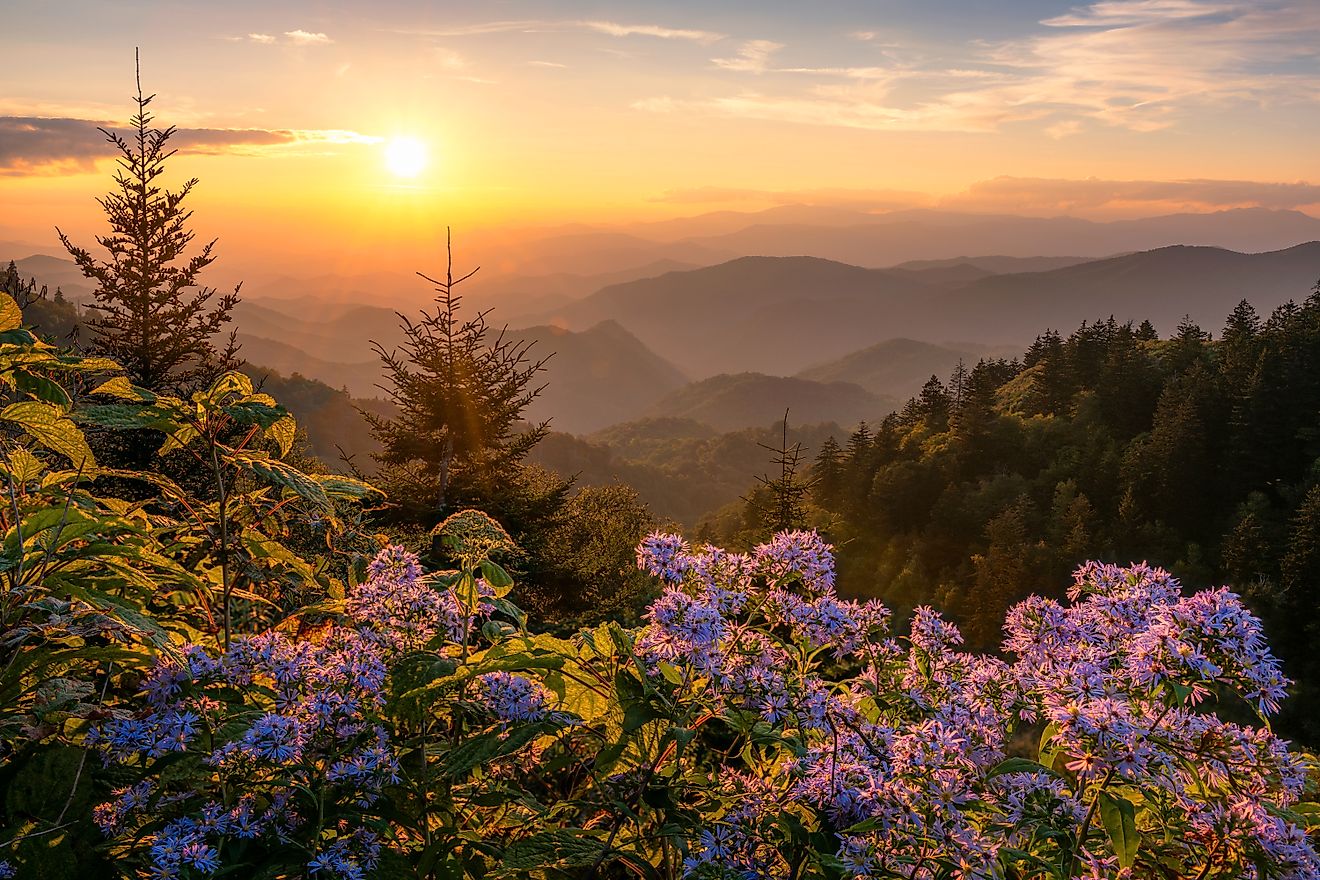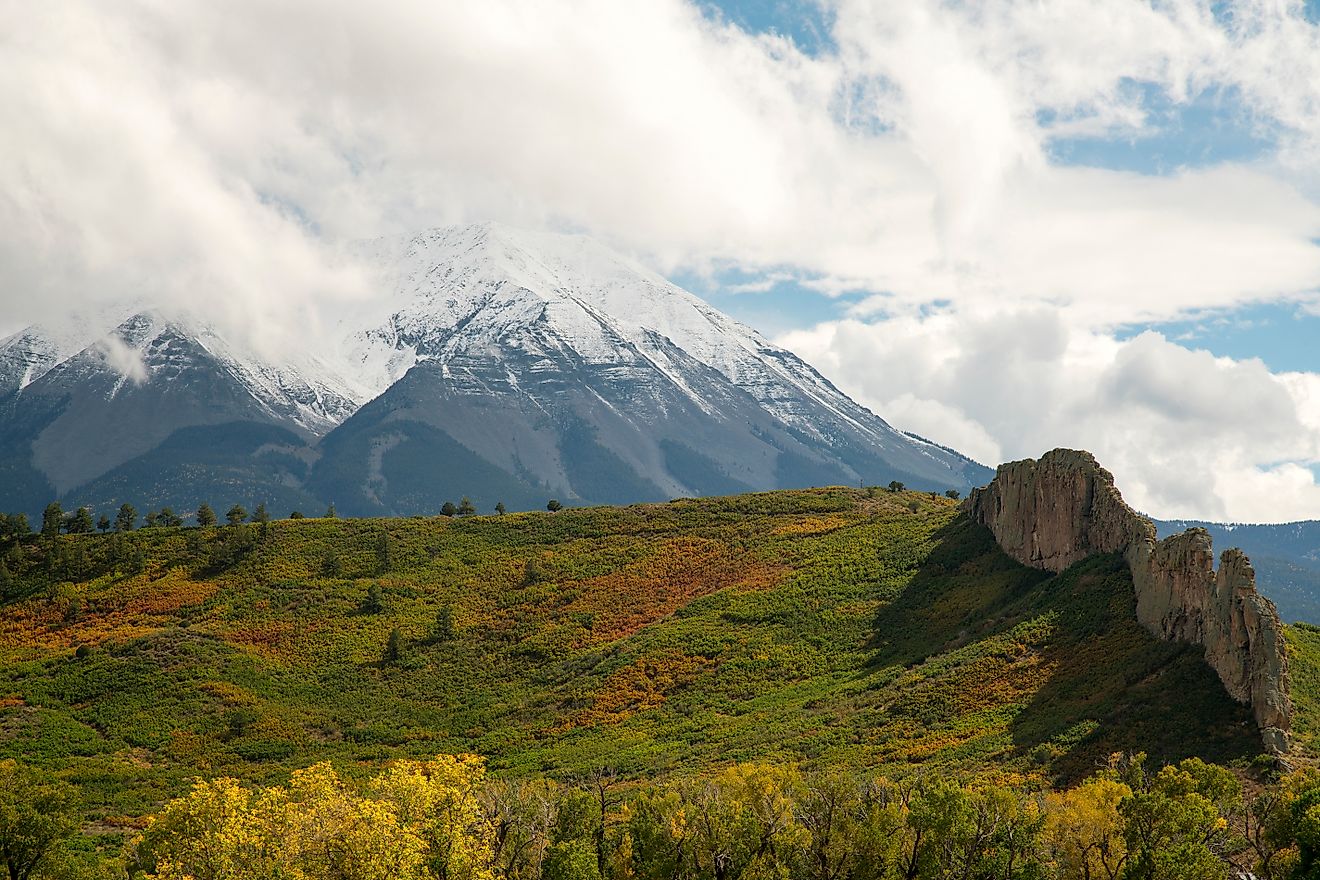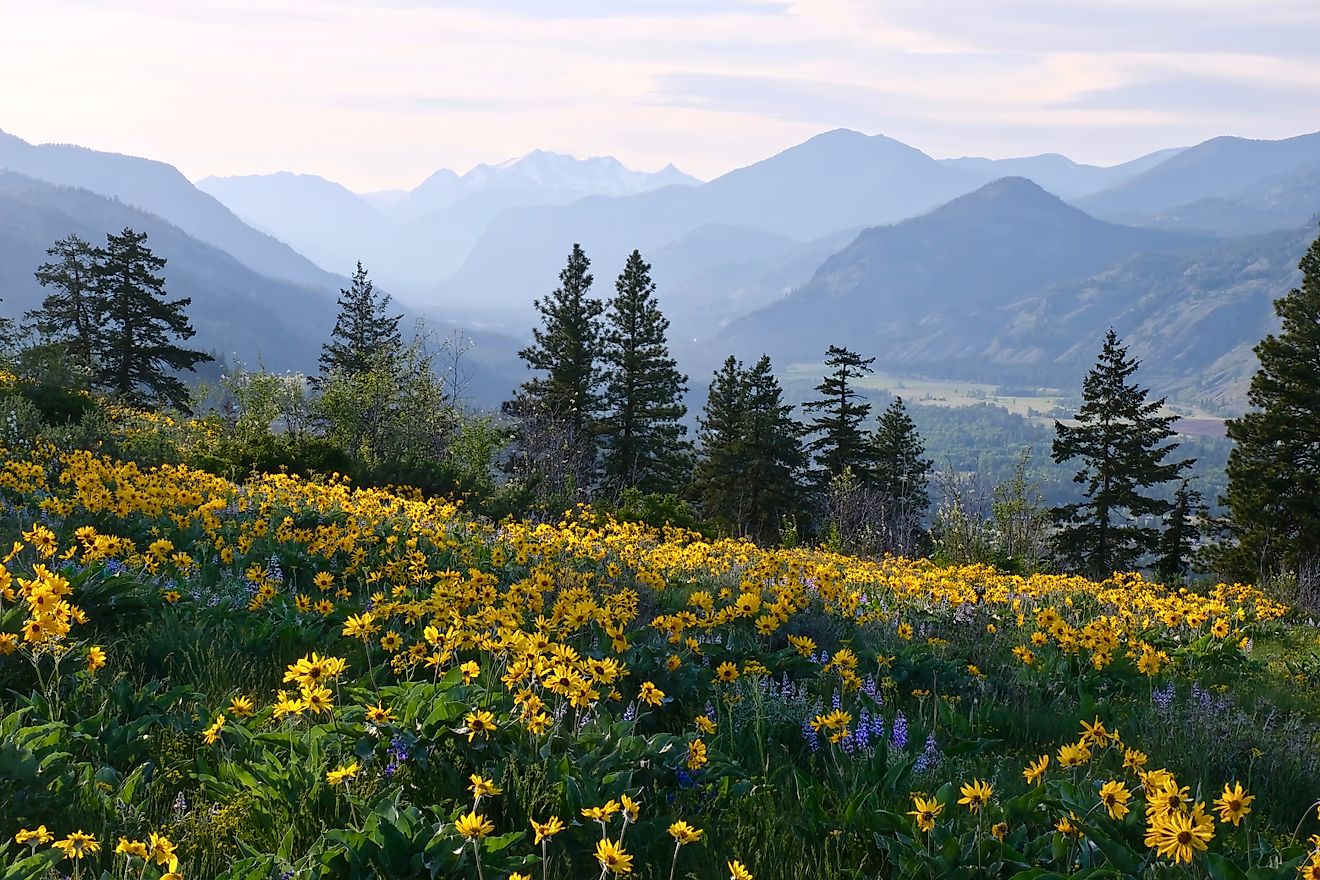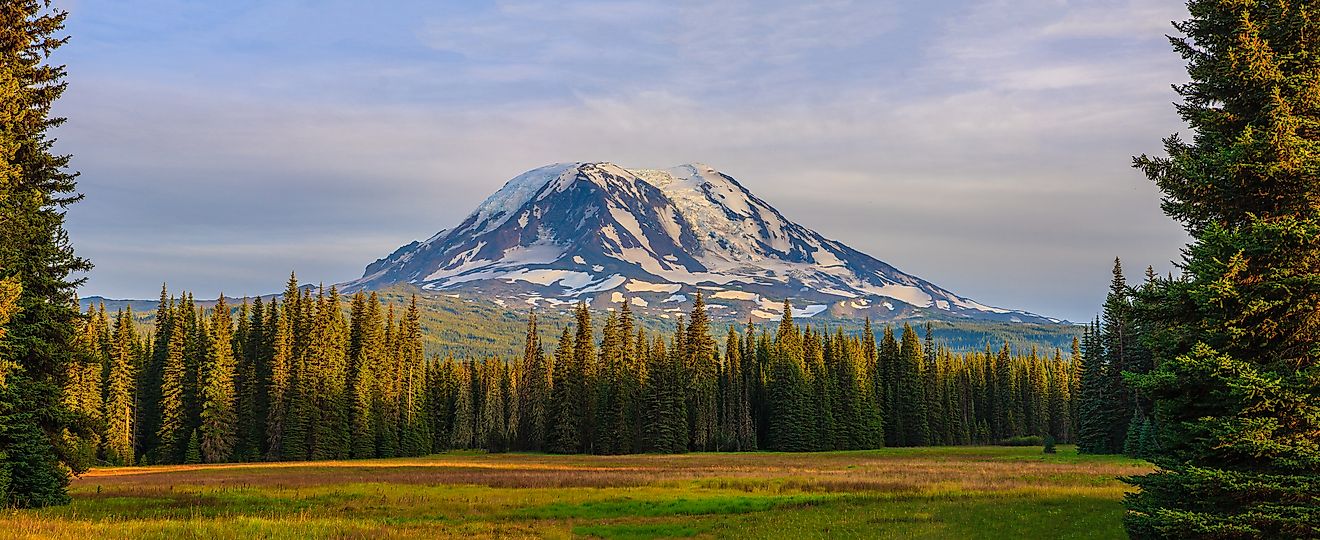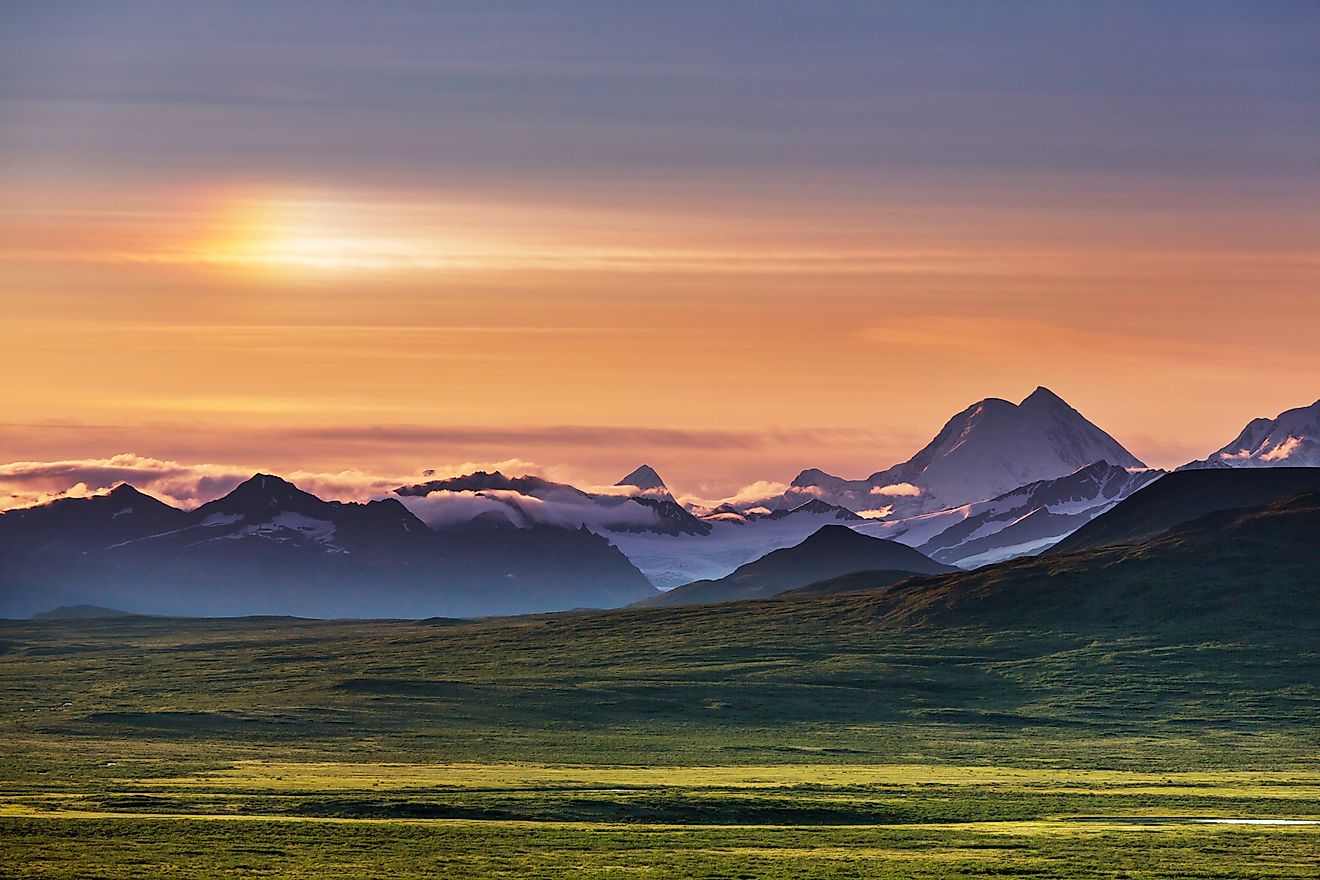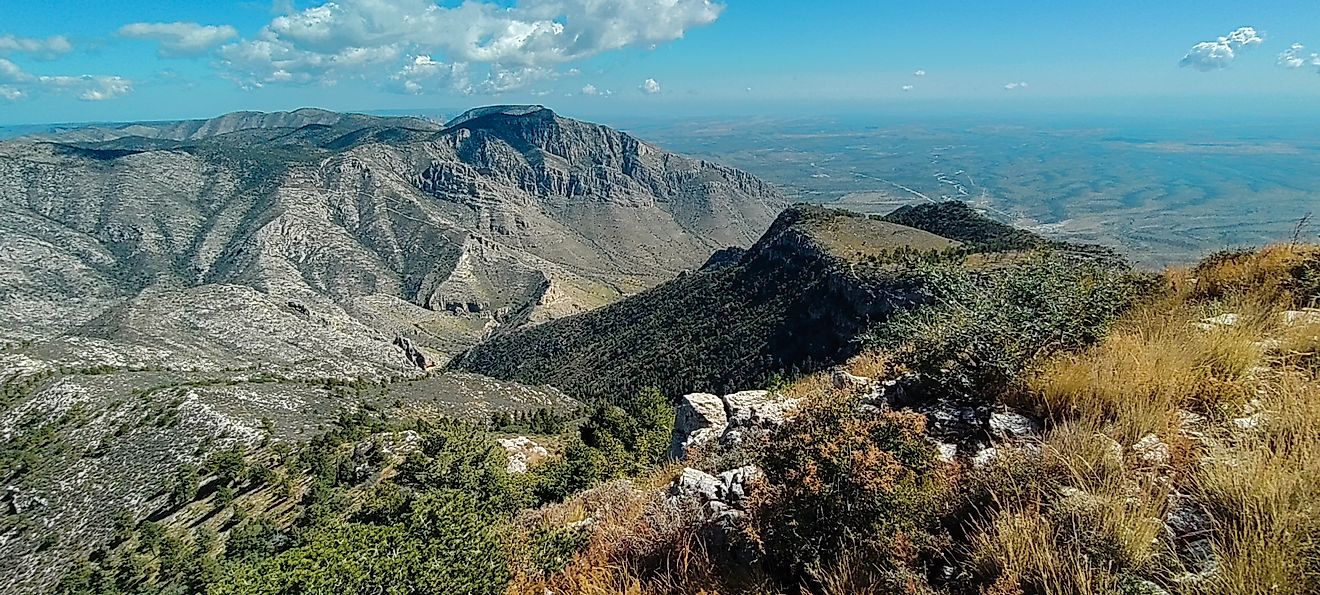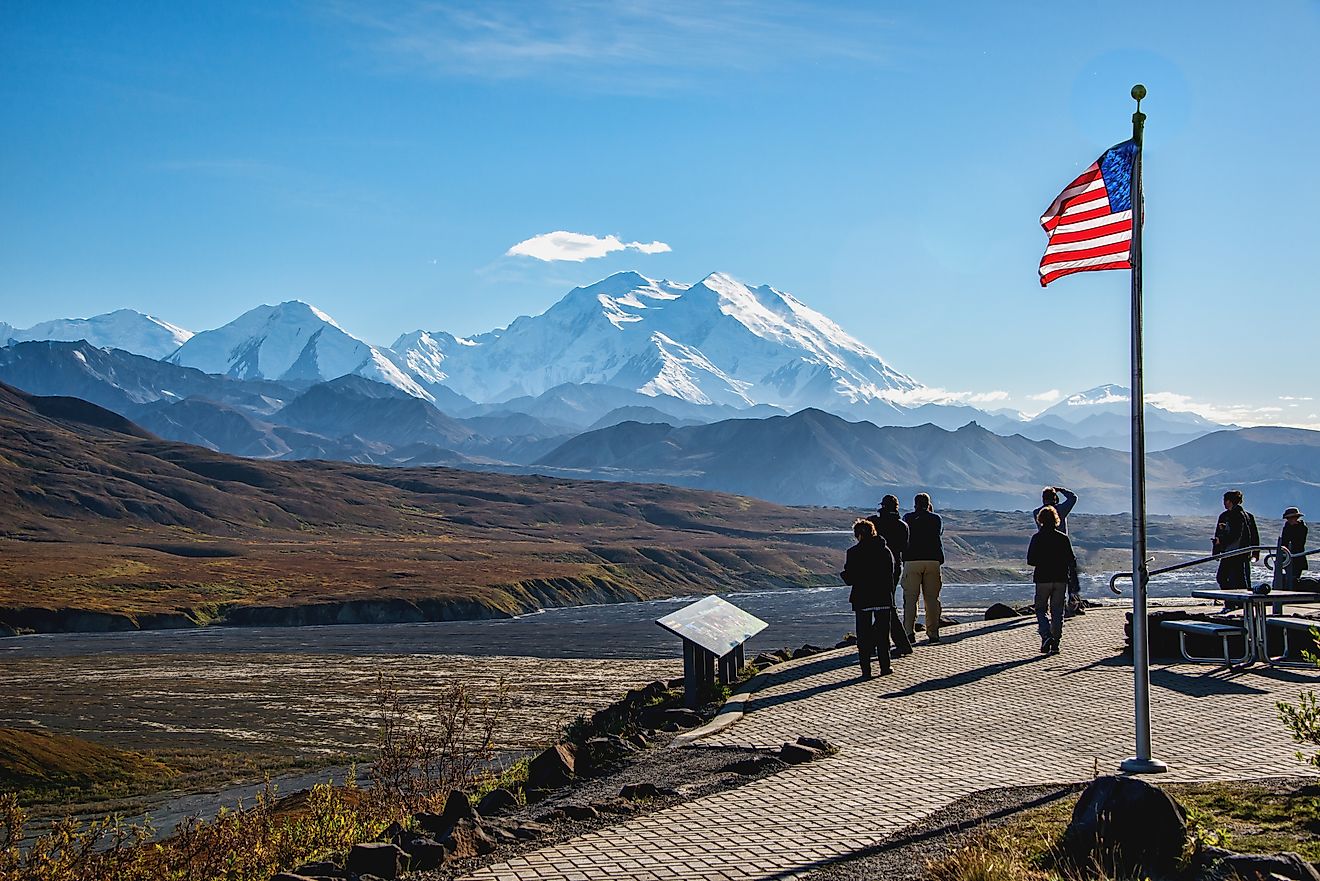
Santa Monica Mountains
Just minutes from the heart of Los Angeles, the Santa Monica Mountains rise like a rugged spine along Southern California’s coastline. Stretching for roughly 40 miles from the Hollywood Hills to Point Mugu in Ventura County, this mountain range offers more than scenic views and celebrity homes. It is a rich mosaic of Native American heritage, dramatic geology, rare wildlife, and vital public lands.
The Santa Monica Mountains form a critical piece of the Transverse Ranges, running east to west rather than the typical north-south orientation seen in most California mountain ranges. Bordered by the Pacific Ocean on one side and urban sprawl on the other, the range is part of the larger Santa Monica Mountains National Recreation Area, one of the most visited protected natural areas in California.
Geography That Tells a Story
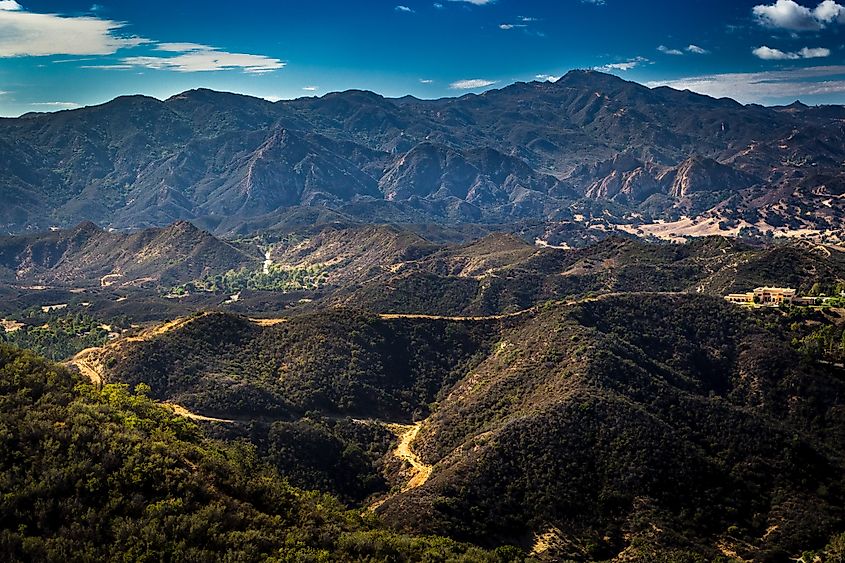
From their eastern roots in the iconic hills of Hollywood to their abrupt end at Mugu Peak near the Oxnard Plain, the Santa Monica Mountains act as a natural barrier and a cultural divider. The range separates the Los Angeles Basin from the San Fernando Valley and helps define the identity of entire neighborhoods and cities.
Unlike the craggy, high-altitude San Gabriel Mountains to the east, the Santa Monicas are of moderate elevation, peaking at Sandstone Peak, the highest point in the range at 3,111 feet. The terrain varies from steep, rugged ridges to rolling oak woodlands, shaped by thousands of years of erosion, uplift, and volcanic activity. Malibu Creek cuts through the center of the range, forming a dramatic gorge that slices the mountains nearly in half.
Echoes of Ancient Cultures
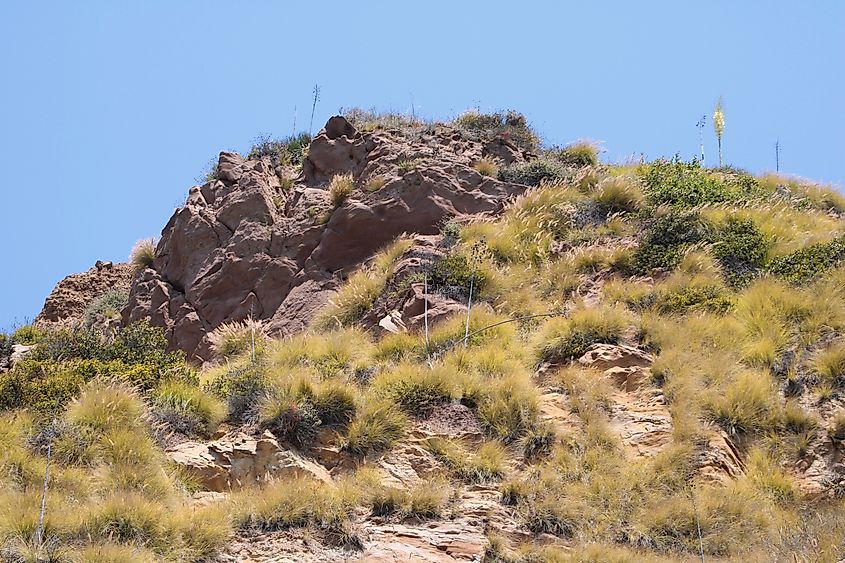
Long before freeways crisscrossed the region, the Santa Monica Mountains were home to the Chumash and Tongva peoples. Archaeologists have identified over 1,000 Native American sites in the range, from rock shelters and grinding stones to sacred spaces like Boney Mountain, which still holds deep spiritual meaning for the Chumash.
These cultures thrived here for more than 8,000 years, relying on the area’s oak woodlands, creeks, and coastal access for food and trade. The Spanish mission system brought abrupt and devastating changes in the 18th and 19th centuries, with the Native population declining dramatically by the early 1800s.
Today, the Satwiwa Native American Indian Culture Center in Newbury Park offers a place to learn about the Indigenous history of the region. Set against the scenic backdrop of the mountains, the center hosts educational programs and hiking trails that connect visitors to the area's living heritage.
A Climate of Extremes
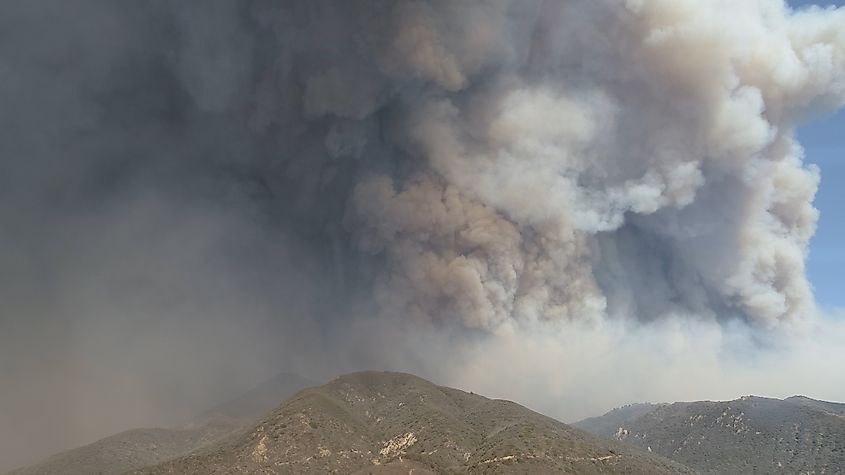
The Santa Monica Mountains experience a classic Mediterranean climate with hot, dry summers and mild, rainy winters. The coastal side often enjoys a blanket of morning fog in summer, keeping temperatures cooler than the inland valleys. Average annual rainfall ranges from 15 to 27 inches, with the wetter areas supporting dense oak and sycamore woodlands.
Despite the generally mild conditions, the range is vulnerable to wildfire, particularly during late summer and fall when dry brush and Santa Ana winds combine. The 2018 Woolsey Fire was a stark example of this danger, scorching over 96,000 acres and burning through more than 40 percent of the mountains’ natural area. The fire was the most destructive ever recorded in the range and led to widespread closures and restoration efforts, including the planting of more than 100,000 native trees, shrubs, and grasses.
Occasional snow surprises locals, usually dusting the highest peaks. Snowfall was recorded on Sandstone Peak as recently as February 2019 and in Malibu Canyon in 2021, a rare sight just miles from the beach.
Wildlife in an Urban Wilderness
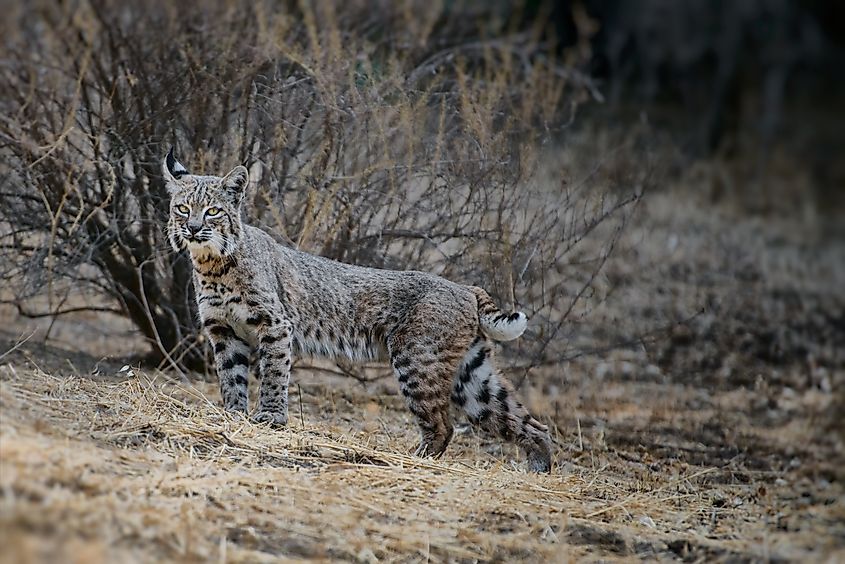
Despite being surrounded by highways and development, the Santa Monica Mountains support a stunning variety of wildlife, from elusive mountain lions to over 380 species of native birds.
Mountain lions, also known as cougars, are perhaps the most famous residents. The National Park Service has tracked more than 100 individuals since 2002. Their survival is challenged by habitat fragmentation and freeway traffic, particularly along the Ventura Freeway (US 101), which acts as a deadly barrier. More than a dozen mountain lions have been struck and killed on this stretch since monitoring began.
Efforts are underway to build the Wallis Annenberg Wildlife Crossing, a vegetated overpass that would allow wildlife to safely cross the freeway and reconnect fragmented habitats. Without this connection, genetic diversity in the mountain lion population continues to decline.
The range is also home to bobcats, mule deer, coyotes, and black bears—the latter being rare. In 2023, a bear known as BB-12 was tracked living in the area before being fatally struck on US 101. Hundreds of bobcats have been studied in the region since the mid-1990s.
Birdwatchers flock to the mountains to catch glimpses of raptors like red-tailed hawks, owls, and golden eagles. Many species use the mountains as a stopover during migration along the Pacific Flyway, including Canada geese, hummingbirds, and pelicans.
Parks and Public Lands
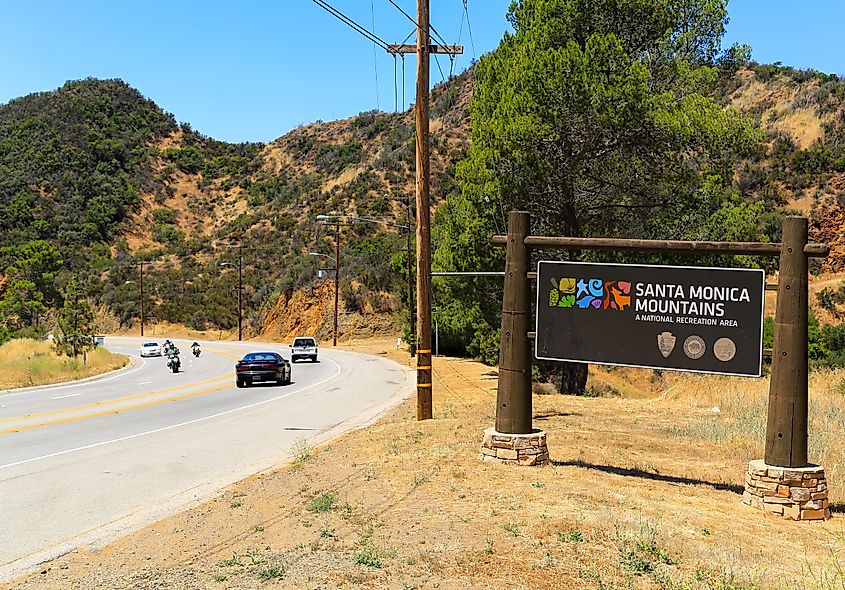
The Santa Monica Mountains are home to a rich network of state, county, and municipal parks, many of which are part of the Santa Monica Mountains National Recreation Area. This patchwork of public lands totals more than 150,000 acres and offers a wide range of recreational opportunities.
Major parks include:
-
Topanga State Park – One of the largest urban parks in the US, with over 36 miles of trails
-
Malibu Creek State Park – A favorite for hiking, rock climbing, and filming location fans
-
Leo Carrillo State Park – Known for coastal access, tidepools, and scenic bluffs
-
Point Mugu State Park – Featuring dramatic cliffs, secluded beaches, and over 70 miles of trails
-
Will Rogers State Historic Park – A preserved ranch with horseback riding and polo fields
Eastern urban parks such as Griffith Park and Runyon Canyon are also considered part of the Santa Monica Mountains, offering views of downtown Los Angeles, the Hollywood Sign, and even the Pacific Ocean on clear days.
Trails That Go the Distance
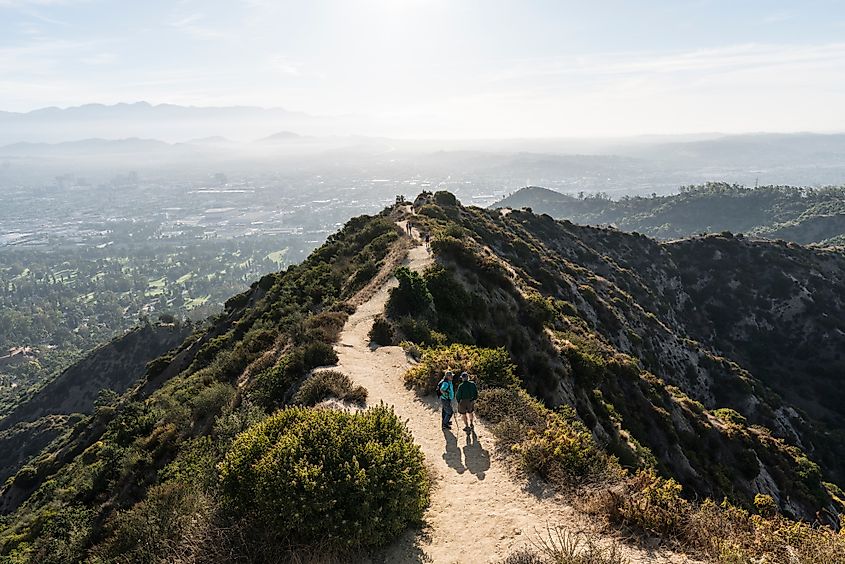
Hikers, cyclists, and equestrians can enjoy hundreds of miles of trails in the range, including part of the Backbone Trail, a 67-mile route that runs the full length of the Santa Monica Mountains. The trail winds through valleys, peaks, and chaparral-covered ridges, connecting parks and providing sweeping views of the ocean.
Another long-term initiative, the Rim of the Valley Trail, aims to connect the Santa Monica Mountains with surrounding mountain ranges, offering a continuous corridor for recreation and wildlife.
A Living Laboratory
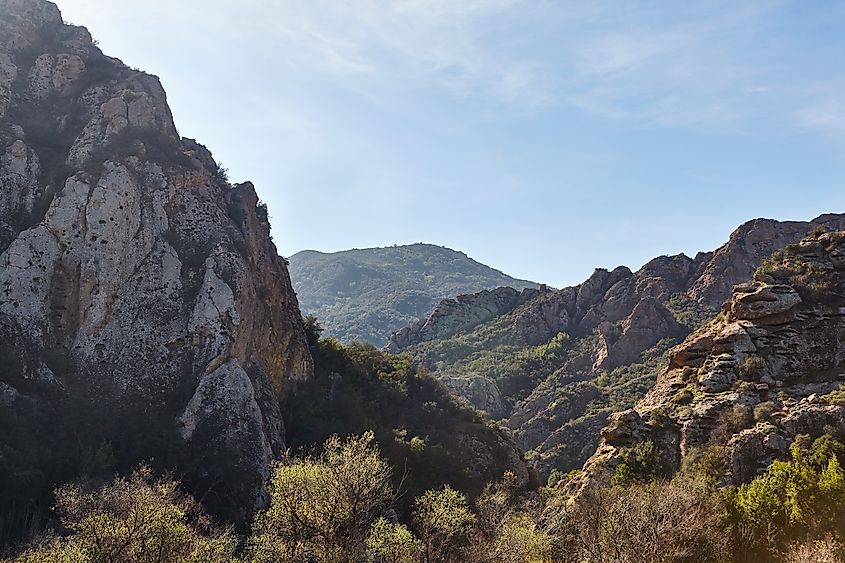
The geology of the Santa Monica Mountains is just as fascinating as its biology. The range formed from complex tectonic processes along the Raymond Fault, with layers of sedimentary and volcanic rock visible in exposed cliffs and canyons. Fossils of ancient fish and invertebrates can still be found in some rock formations, evidence of a time when the region was submerged under the sea.
Malibu Creek and other waterways have carved dramatic gorges through these uplifted layers. Some creeks, including parts of the Los Angeles River watershed, begin in the mountains and flow toward the coast or urban lowlands, supporting riparian ecosystems in an otherwise dry landscape.
Why the Santa Monica Mountains Matter
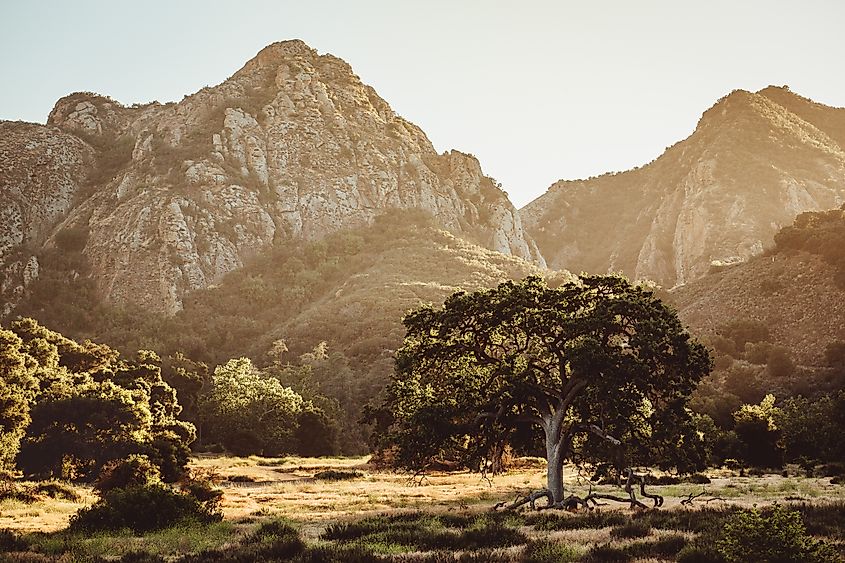
In an age of climate change, urban sprawl, and biodiversity loss, the Santa Monica Mountains serve as a critical buffer—a green belt between metropolis and wilderness. They provide water storage, carbon capture, recreational space, and refuge for vulnerable species. They also represent a deep cultural legacy, from ancient villages to early Hollywood ranches.
The fight to preserve and expand these lands continues, balancing human use with habitat protection. Land-use plans such as the Santa Monica Mountains Local Coastal Program, adopted in 2014, are vital tools in shaping the region’s future.
Planning a Visit
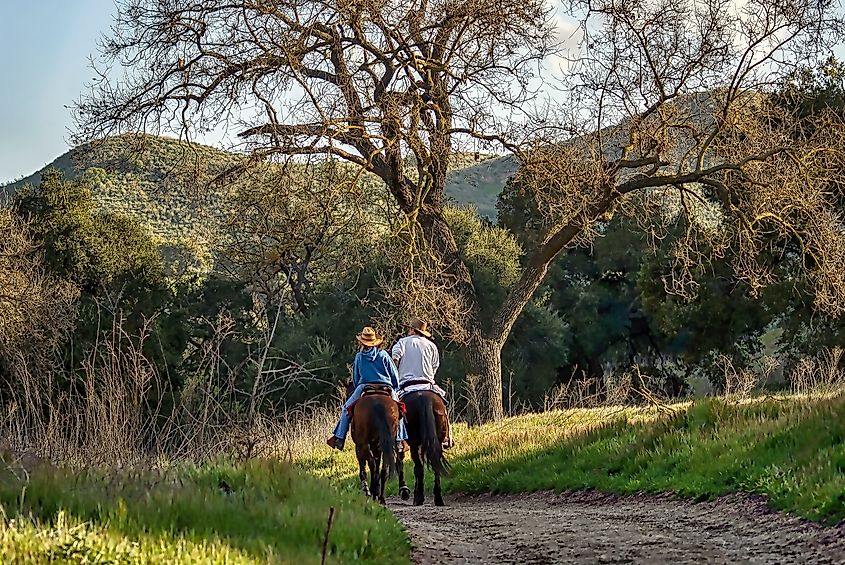
If you're planning a trip to Los Angeles or Ventura County, take time to experience the Santa Monica Mountains. Whether you’re watching the sunset from Point Dume, hiking the Backbone Trail, spotting deer at King Gillette Ranch, or walking in the footsteps of the Chumash at Satwiwa, this range offers a rich slice of California that’s wild, beautiful, and undeniably alive.
